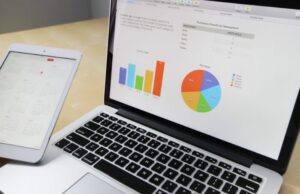Business Intelligence (BI) is a technology-driven process of analyzing data and presenting information to support business decision-making. The use of BI has become increasingly prevalent in recent years, as companies look to gain competitive advantages by leveraging the power of data. However, the ROI of BI is not always clear. In this article, we will explore what ROI means in the context of BI, why it matters, and how to calculate it. We will also discuss some best practices for maximizing the ROI of BI.

What is ROI, and Why Does it Matter?
ROI stands for Return on Investment, which is a measure of the profitability of an investment. It is typically expressed as a percentage, calculated by dividing the net profit by the cost of the investment. ROI is an essential metric for evaluating the success of any investment, including BI.
BI investments can be significant, involving the purchase of software, hardware, and the hiring of specialized personnel. Therefore, it is essential to understand the ROI of BI to justify these investments and allocate resources effectively. BI can provide significant benefits, including improved decision-making, increased efficiency, and reduced costs. However, calculating the ROI of BI can be challenging due to the complexity of the technology and the difficulty in quantifying its impact.
Calculating the ROI of BI
To calculate the ROI of BI, it is necessary to consider both the costs and the benefits of the investment. The costs of BI can include software and hardware purchases, personnel salaries, training, and maintenance. The benefits of BI can include increased revenue, reduced costs, improved efficiency, and better decision-making.
To determine the ROI of BI, the total costs and benefits of the investment over a specific period must be calculated. The net benefit is then divided by the total cost of the investment to determine the ROI. For example, if the total cost of a BI investment was $100,000, and the net benefit over a two-year period was $200,000, the ROI would be calculated as follows:
ROI = (Net Benefit / Total Cost) x 100% ROI = ($200,000 / $100,000) x 100% ROI = 200%
In this example, the ROI of the BI investment is 200%, indicating that the investment has been highly profitable.
Best Practices for Maximizing the ROI of BI
Maximizing the ROI of BI requires careful planning and execution. Here are some best practices to consider:
Align BI with Business Goals
BI investments should be aligned with the company’s strategic goals and objectives. The BI strategy should support the company’s mission, vision, and values.
Use a Data-Driven Approach
BI decisions should be based on data rather than intuition or guesswork. Data quality should be a top priority, and data should be analyzed systematically.
Provide Adequate Training and Support
BI users should receive adequate training and support to ensure that they can use the technology effectively. A lack of training can lead to underutilization of the technology, reducing its ROI.
Continuously Monitor and Evaluate
BI investments should be continuously monitored and evaluated to ensure that they are meeting the company’s goals and objectives. The ROI of BI should be calculated regularly to track the profitability of the investment.
Start Small and Scale Up
BI projects should start small and scale up over time. This approach allows companies to test the technology and identify areas for improvement before investing heavily in the technology.
Conclusion
The ROI of BI is an essential metric for evaluating the profitability of BI investments. Calculating the ROI of BI requires a careful consideration of both the costs and benefits of the investment. Maximizing the ROI of BI requires careful planning, execution, and ongoing monitoring and evaluation. By following best practices and aligning BI investments with business goals, companies
can achieve significant benefits from BI, including improved decision-making, increased efficiency, and reduced costs. As the use of data and technology continues to grow, understanding the ROI of BI will become increasingly important for companies of all sizes and industries.
FAQs
- What is the difference between BI and data analytics?
BI is a process of analyzing data and presenting information to support business decision-making, while data analytics is a broader term that includes the process of collecting, processing, and analyzing data to gain insights and inform decision-making.
- What are some common BI tools?
Some common BI tools include Tableau, Power BI, QlikView, and SAP BusinessObjects.
- Can small businesses benefit from BI?
Yes, small businesses can benefit from BI by gaining insights into customer behavior, market trends, and operational efficiency.
- How long does it take to see ROI from a BI investment?
The time to see ROI from a BI investment can vary depending on the scope of the project and the complexity of the technology. However, companies typically see ROI within 1-2 years of implementing a BI solution.
- Can BI help with compliance and risk management?
Yes, BI can help with compliance and risk management by providing real-time data and insights into areas such as fraud detection, regulatory compliance, and cybersecurity.